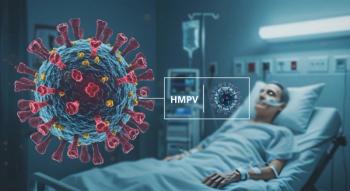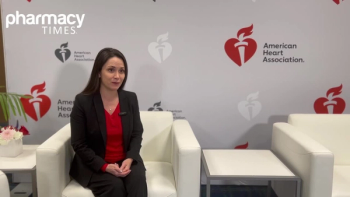
FINTOX May Improve Financial Toxicity Screening in Cancer Treatment
Accurate, effective screening is crucial for connecting patients with needed financial resources and support.
Researchers from Baylor College of Medicine in Houston may have developed a concise tool for screening and managing financial toxicity (FinTox) for patients with various types of cancer. The FinTox (FINTOX) screening measure offers clinics a practical solution with reliable diagnostic accuracy that facilitates the identification of patients in need of financial assistance with the goal of improving patient-centered care.
Cancer survivorship in the US has significantly improved over the decades, with forecasts of 22.5 million survivors by 2032. Cancer remains one of the most expensive medical conditions to treat, largely due to the growing use of treatments like chemotherapy, targeted therapies, and CAR T-cell therapy, among others. Patients are faced with increasing out-of-pocket expenses due to rising health care insurance deductibles, copayments, and coinsurance, as well as various other financial impacts throughout the health care system.1
According to some research, 25.3% of cancer survivors experience material financial hardship, 34.3% suffer from subjective financial distress, and 26% endure behavioral financial hardship such as delaying medical care due to cost. FinTox refers to the harmful personal financial burden attributable to a patient's medical needs. Many patients with cancer experience treatment-related financial trauma, potentially leading them to ration medication, delay necessary treatments, or make other treatment decisions based on costs that may negatively impact their prognosis.1-3
FinTox has long-lasting financial implications for many patients with cancer, especially those with incurable disease who require ongoing monitoring and supportive care during treatment, as well as maintenance. In a separate study, researchers evaluated the impact of FinTox and time toxicity (TimeTox) on quality of life (QOL) in patients with multiple myeloma (MM). Out of over 250 patients with MM, 22% reported FinTox while 40% reported TimeTox. Additionally, FinTox was associated with lower income and a clinically meaningful decrease in mental QOL. The findings support existing evidence suggesting the benefit of FinTox screening in clinical settings.4
Screening is crucial for connecting patients experiencing or at risk of developing FinTox to needed resources and support. However, the existing patient-reported outcome measures for financial toxicity, the Comprehensive Score for FinTox (COST) patient-reported outcome measure, are lengthy and complex, making them impractical for fast-paced clinical environments. Further, they may not fully capture the experiences of uninsured patients or those experiencing unique financial challenges. To address this need, the researchers introduced FINTOX, a quick, accurate, and easily administered tool that can efficiently identify patients experiencing financial toxicity in busy clinical settings.1
The development of FINTOX involved qualitative interviews with health care providers and patients, as well as feedback from a 7-member expert panel. This resulted in a 5-item measure evaluating financial strain, psychological responses, and care modifications. The researchers used psychometric evaluations to ensure consistency, reliability, and validity of the test. Univariate and multivariable regression models were utilized to assess the associations between FinTox scores and sociodemographic/medical factors.1
A total of 268 patients (69.8% female, 47.4% non-Hispanic White) completed 3 surveys including FINTOX, COST, and health-related quality of life (HRQOL) measures, as well as other sociodemographic questions. According to the data, FINTOX demonstrated significant internal consistency (Cronbach's alpha = 0.90) and strong test-retest reliability (ICC = 0.95). Additionally, its results showed significant correlations with the COST (r = −0.62, P <.001) and HRQOL measures. Diagnostic accuracy was evidenced by a sensitivity of 72.3%, specificity of 85.2%, positive predictive value of 83.2%, and negative predictive value of 70.3%. The researchers also reported that higher FinTox scores were associated with several factors, including receiving care at a safety-net hospital, Black race, a household income below 600% of the federal poverty level, and having stage 4 cancer.1
With the growing availability of knowledge, treatments, and potential cures, FinTox continues to be a barrier and burden for patient across various types of cancer. The psychometric properties and diagnostic accuracy of FINTOX position it as a reliable tool for detecting FinTox. Following studies should evaluate its responsiveness to changes over time and how to effectively integrate it into clinical workflows.
REFERENCES
Badr H, Han J, Mims M. Development and validation of fintox: a new screening tool to assess cancer-related financial toxicity. Cancer Med. August 7, 2024. doi: 10.1002/cam4.7306
Hueniken K, Douglas C, Jethwa A, et al. Measuring FinToxincurred after treatment of head and neck cancer: development and validation of the financial index of toxicity questionnaire. Cancer. June 30, 2020. doi: 10.1002/cncr.33032
Souza J, Yap B, Wroblewski K, et al. Measuring FinTox as a clinically relevant patient-reported outcome: the validation of the comprehensive score the FinTox(cost). Cancer. October 7, 2016. doi: 10.1002/cncr.30369
Banerjee R, Cowan A, Chavez-Ortega M, et al. FinToxand time toxicity in multiple myeloma: prevalence, predictors, and impact on qol. Blood. November 2, 2023. doi: 10.1182/blood-2023-174554
Newsletter
Stay informed on drug updates, treatment guidelines, and pharmacy practice trends—subscribe to Pharmacy Times for weekly clinical insights.


















































































































































































































